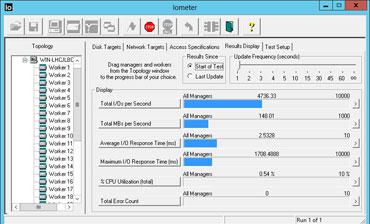Review: Dell's Latest AMD-Based Server, The PowerEdge R815

About a month after the November release of AMD's Opteron 6300-series processors, Dell began shipping a refreshed version of the 2U PowerEdge R815 server with support for AMD's higher-speed, lower-power server parts code-named Abu Dhabi. The new processors use AMD's Piledriver cores but are otherwise the same as the Interlagos-based CPUs in the R815 the CRN Test Center reviewed in November of 2011.
At that time, we were impressed with the 11th-gen R815's performance. The current four-socket machine turned in a Geekbench high score that's about 5 percent slower than its predecessor, but it also lists for about $2,300 less when comparably equipped. The newer machine consumed significantly less power, and the new R815 supports older Opteron 6100-series processors through the current line of 6300 parts in 1, 2 or 4-processor configurations each with 4, 8, 12 or 16 cores. The BIOS is used to enable and disable cores, and settings remain active until changed. The motherboard supports a maximum of 512 GB of four-channel DDR3 memory in 32 DIMM slots at speeds up to 1,600MHz.
The test unit was configured with each of its four sockets stuffed with an Opteron 6380, a 16-core processor running at 2.5GHz, and it packed 16 MB of L2 cache plus 16 MB of L3 cache. The previous tested model was running Windows Server 2008 R2 Enterprise on six 73-GB 15K SAS drives configured as RAID 5; the current system ran Windows Server 2012 Datacenter on a pair of 300-GB 10K SAS drives configured as RAID 0. Both systems were equipped with a 115-watt processors, both had Dell PERC H700 RAID controllers, and each had 128 GB of 1,600MHz system RAM. The current machine as configured would cost $10,365 retail, whereas the prior machine had a list price of $12,631.
After adjusting Windows advanced system properties for maximum performance, testers downloaded Geekbench 2.4.2 from Primate Labs, quit all applications and launched the 64-bit version. The highest of five test runs yielded a score of 19,320, which is 1,102 points, about 5 percent, lower than the previous generation's high of 20,422. Power consumption during the benchmarks peaked at 478, compared with the prior model's peak wattage of 561. Average power consumption of the current was about 306 watts during normal operations, compared with the old generation's 430 watts.
In terms of throughput processing, the two-drive PowerEdge R815 delivered solid performance, but it couldn't keep up with the five-drive array of the prior generation. Using IOmeter to measure performance, the current model showed a sustained data transfer rate of 148 MBps, when handling sequential 16K-byte packet reads, and a maximum transaction rate of 46.8K IOps on 512-byte sequential reads. The prior generation delivered 56.5K IOps and 221 MBps.
The Test Center still considers the PowerEdge R815 a high-performance workhorse, and with its more power-efficient energy signature, it is now more capable of providing lower TCO and quicker ROI. The PowerEdge R815 would be well suited to virtualized and high-performance computing environments as well as department-level file services, and it is a recommended product.
PUBLISHED APRIL 3, 2013